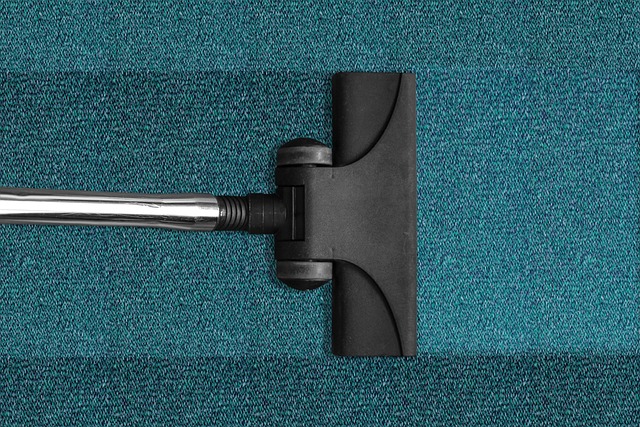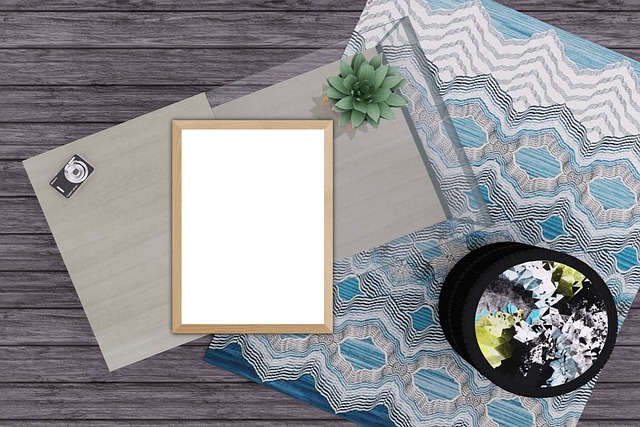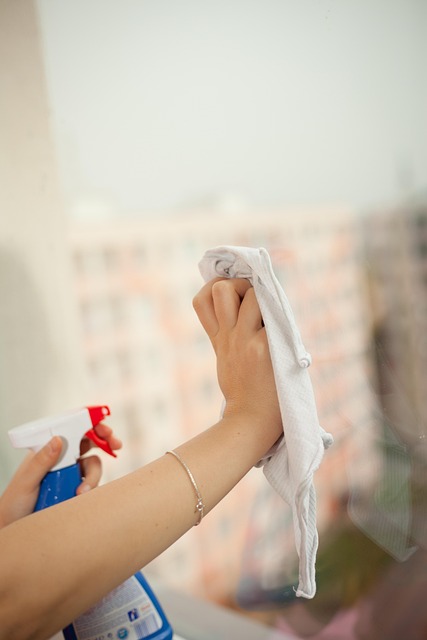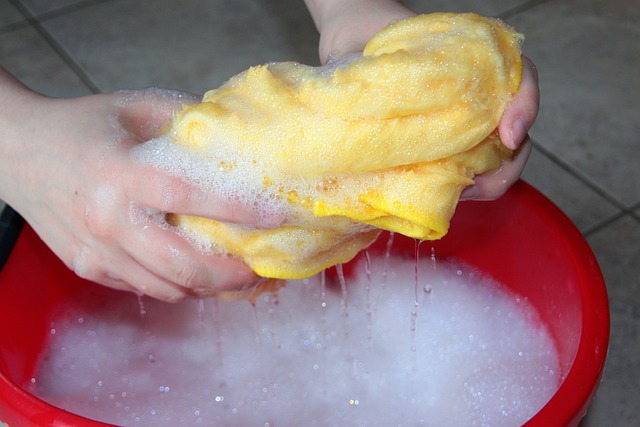Rug cleaning requires a tailored approach based on fiber type, with natural fibers needing gentle care and synthetics demanding specific techniques to prevent fading or shrinking. Prepare rugs by vacuuming thoroughly and inspecting for stains and materials. Select appropriate cleaning solutions for the rug material and stain type. Deep clean using hot water extraction (steam cleaning) or chemical methods, choosing based on needs and preferences. Act quickly on stains, use natural cleaners first, and invest in specialized products to prolong rug life. After deep cleaning, allow proper drying and curing, then vacuum again. Regular maintenance, including vacuuming and spot cleaning, along with professional deep cleanings, ensures rugs remain in top condition.
Deep cleaning rugs is an essential task for maintaining their beauty and longevity. This comprehensive guide explores the intricacies of rug cleaning, offering insights into various methods and solutions. From understanding fiber types to choosing the right products, each step ensures optimal results. We compare hot water extraction and chemical cleaning, provide spot-cleaning tips, and discuss drying techniques. Additionally, we cover maintenance strategies and know when to seek professional help, empowering you with the knowledge to keep your rugs pristine.
Understanding Rug Fiber Types and Their Cleaning Needs

Rugs come in a wide variety of fiber types, each with its own unique cleaning requirements. Understanding these differences is crucial for effective deep cleaning. For instance, natural fibers like wool and silk require gentle handling due to their delicate structure; over-aggressive cleaning can damage them. On the other hand, synthetic fibers such as polyester or nylon are more durable but may still be susceptible to fading or shrinking if not cleaned properly.
Knowing the fiber type of your rug is essential for selecting the right cleaning methods and products. Different fibers absorb and release moisture at varying rates, so using appropriate techniques ensures that your rug stays clean and preserves its quality over time. This tailored approach to rug cleaning prevents damage, maintains aesthetics, and extends the lifespan of these valuable floor coverings.
Preparation: Vacuum and Inspect Before Deep Cleaning

Before diving into a deep cleaning process, it’s crucial to prepare your rug for optimal results. Start by vacuuming the rug thoroughly to remove any loose dirt, dust, and debris accumulated on the surface and within the fibers. This step is essential in Rug Cleaning as it prevents damage caused by foreign particles during the cleaning process.
Additionally, take a moment to inspect the rug for any stains, wear and tear areas, or specific materials used in its construction. This inspection will help you tailor your deep-cleaning approach accordingly. For example, antique rugs or those with delicate patterns might require more meticulous handling and specialized techniques to ensure their longevity.
Choosing the Right Cleaning Solutions for Optimal Results

When it comes to deep cleaning rugs, selecting the right cleaning solutions is paramount for achieving optimal results. Different rug materials require specific care, and using the wrong product can lead to discolouration or damage. For example, delicate wool rugs necessitate gentle, pH-neutral cleaners to prevent fibres from fraying or fading. Conversely, synthetic fibre rugs may tolerate stronger detergents, but it’s crucial to check their labels to avoid residue build-up.
Considerations also extend to the type of stain being addressed. Spot cleaning requires targeted solutions, while comprehensive rug cleaning demands a formula designed to tackle dirt and grime deep within the fibres. Professional-grade rug cleaners often offer a range of options, from eco-friendly to high-potency formulas, ensuring you find the perfect match for both your rug’s material and the specific stains present.
Methods of Deep Cleaning Rugs: Hot Water Extraction vs. Chemical Cleaning

Deep cleaning rugs is a crucial aspect of maintaining their quality and aesthetic appeal. Two prominent methods in rug cleaning are hot water extraction and chemical cleaning, each with its own advantages and applications. Hot water extraction, also known as steam cleaning, involves using high-pressure hot water to dislodge dirt and grime from the rug’s fibres. This method is effective for removing deep-seated dust, allergens, and even some types of stains. It is a popular choice due to its ability to clean thoroughly without the use of harsh chemicals, making it safer for both humans and pets.
In contrast, chemical cleaning involves the application of specialized solutions to break down dirt and grime. These solutions can be gentle or aggressive, depending on the rug’s material and the specific stains present. Chemical cleaners are effective for tackling stubborn spots and odours that hot water extraction might miss. However, they may leave behind residual chemicals if not properly rinsed, which could be a concern for those seeking eco-friendly cleaning methods. As such, understanding the differences between these techniques is essential for choosing the best rug cleaning approach based on individual needs and preferences.
Tips for Spot Cleaning Common Rug Stains

When it comes to spot cleaning rugs, being proactive is key. The moment you notice a stain, act quickly as it’s easier to remove fresh spills. Start by blotting the area gently using a clean cloth or paper towel to absorb as much of the liquid as possible. Avoid rubbing, which can spread the stain further. For dry stains, like dirt or dust, use a vacuum cleaner with a brush attachment to thoroughly clean without causing damage.
When dealing with specific types of stains, such as wine, coffee, or pet accidents, use white vinegar and water in a 1:1 ratio for a natural cleaning solution. Apply it to the stain, let it sit for a few minutes, then blot dry. For more stubborn marks, consider using specialized rug cleaning products designed for different types of fibers, ensuring you follow the manufacturer’s instructions for optimal results in maintaining your rug’s cleanliness and extending its life, ultimately saving you money on extensive professional rug cleaning.
Drying and Curing Your Rug After a Deep Clean

After a thorough deep cleaning, proper drying and curing are essential steps in the rug cleaning process. This involves allowing your rug to air dry completely before stepping on it or using it again. The duration for this can vary depending on several factors such as the size of the rug, the type of fibres it’s made from, and the depth of the clean. Generally, it’s recommended to leave the rug undisturbed for 24-48 hours.
During this time, make sure your rug is in a well-ventilated area, avoiding direct sunlight or any heat sources as this could cause shrinkage or discolouration. Once dry, carefully vacuum the rug again to remove any remaining moisture or dirt particles. This final step ensures that your deep cleaned rug remains in top condition and extends its life, preserving its beauty and vibrancy for years to come.
Maintaining Your Rugs to Prevent Repeated Dirtying

Regular maintenance is key to keeping your rugs in top condition and reducing the need for frequent deep cleaning. Preventative measures can save time, effort, and money in the long run. Vacuuming is an essential part of rug care; it removes loose dirt, dust, and debris that can accumulate and lead to staining. Aim to vacuum high-traffic areas daily, and less frequently for lower-use zones. For extra protection, consider using doormats at entrances to trap outdoor dirt and moisture before it reaches your rugs.
In addition to vacuuming, spot cleaning is crucial when addressing any immediate spills or stains. Act quickly to avoid permanent marks. Use a clean cloth or paper towel to blot the area gently, absorbing as much of the liquid as possible. Avoid rubbing, which can spread the stain further. For stubborn stains, invest in professional rug cleaning services that employ safe and effective cleaning solutions tailored for different fabric types. Regular professional deep cleanings will ensure your rugs stay pristine and extend their lifespan between intensive cleaning sessions.
Professional Rug Cleaning: When to Consider Expert Help

Many homeowners tackle rug cleaning as a regular part of their household maintenance routine, but there are instances where professional rug cleaning services are the best course of action. Deep cleaning rugs professionally is particularly recommended for heavily soiled or high-traffic areas. Experts in rug cleaning have access to specialized equipment and products that can effectively remove deep-seated dirt, stains, and odors that might be beyond the reach of a standard home cleaning toolkit.
Engaging professional rug cleaners is especially beneficial for valuable or antique rugs that require specific care. These experts are trained to handle delicate fabrics and use methods tailored to different rug materials, ensuring their longevity and preserving their aesthetic appeal. Regular deep cleaning by professionals can also help extend the life of your rugs, making them last longer without showing excessive wear and tear.
